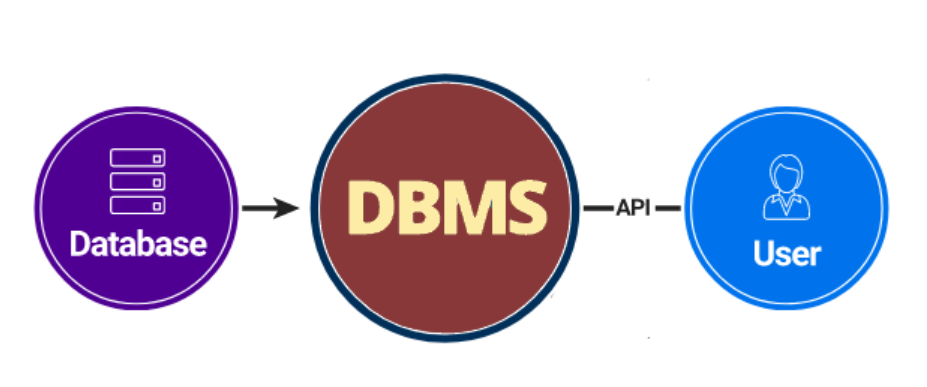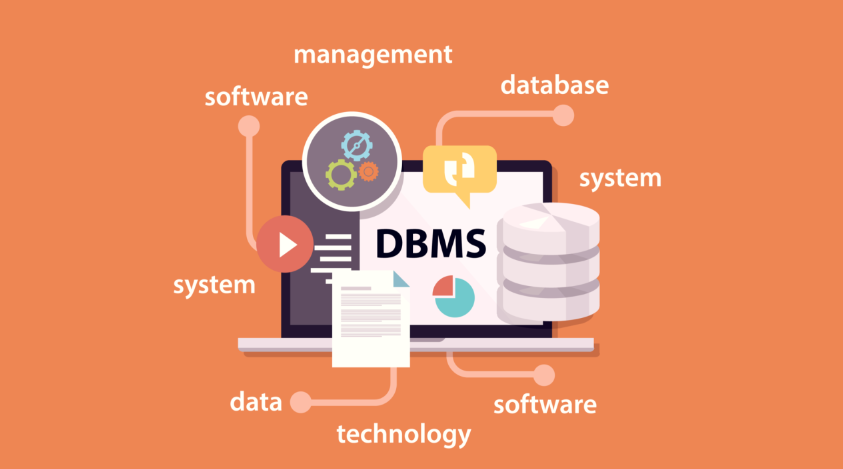Today’s reality is that data management is the key to success in such a high-speed environment. This is where Database Management Systems (DBMS) come in; The advantage of database programs as a structure for Database Management Systems (DBMS). These systems assist in the collection, archiving, and access of data, making them a necessity for organizations of every kind.
However, like any other technology, DBMS has its advantages and disadvantages, which are discussed below, to enable a business entity to be informed on its benefits or to embrace DBMS. Specifically, to help you decide, in this blog post, you will find a detailed answer to what DBMS is and all the advantages and disadvantages of using DBMS.
Improved Data Accessibility and Sharing
With a DBMS, data accessibility and sharing become significantly more efficient. By creating a centralized database, all the employees of this company, regardless of the departments they work in, can access and share information with relative ease. Through implementing the described approach, data silos are avoided; as a result, the employee is enabled to collaborate with others. They noted that uniformity of data reduces errors and inconsistencies since every member of an organization is working with data from a DBMS.
Remote teams also get improved accessibility because people can access the shared data regardless of their locations with no hitches. This means that irrespective of whether an employee is physically located in one office or is working remotely from another or directly from home, everyone is constantly working with the same current data, which makes for easy collaboration.
Real-time data availability also helps form another unique selling point. Using contemporary data becomes especially valuable when working in a rapidly evolving business segment. A DBMS makes it possible for the updating of data to happen as soon as it is required and accessible to the required individual. This, in turn, enhances the operation’s efficiency and performance.
Also, a DBMS provides flexibility in incorporating disparate databases into one framework, easing data handling and acquisition. This integration aids in optimizing work and, in terms of ownership of differing documents. Overall usage and access to information enhance daily work, employee efficiency, and unity within the established organization.
Enhanced Data Security
In the age of digital transformation, protecting sensitive data is paramount, and a DBMS offers advanced security measures to ensure data integrity. Among the obvious advantages, it is necessary to identify the function of assigning user roles and permissions, according to which only some employees can work with specific data or information materials. This kind of access control, typically based on the role, is vital to data security and to avoid the risks resulting from the disclosure of data.
Furthermore, encryption technologies inherent in many implemented DBMSs are active in shielding data stored and transmitted. This encryption helps protect crucial information such as customers’ data, cash data, and other legal and intellectual property that is nearly complicated for cybercriminals to penetrate.
Another security feature inherent to a DBMS is the option for tracking users and automatically logging their actions. Through monitoring user activity on specific data, and the time at which the latter was accessed, anomalous activities or a possible security risk may be identified. This auditing capability is most helpful in ensuring that an organization’s management is being held responsible and meeting legal obligations.
Moreover, today’s DBMSs are frequently self-upgradable and self-protected, which means they can regularly update the system and patch the vulnerabilities that have been recently found. All these continuing enhancements in security characteristics ensure that businesses remain relevant in the ever-changing nature of cybersecurity.
Better Data Integration
A DBMS excels in integrating data from diverse sources into a cohesive whole. This capability is especially beneficial for businesses that handle data from various channels or platforms. By consolidating different types of data—such as customer information, transaction records, and inventory details—into a single database, a DBMS eliminates the need for multiple disparate data storage solutions.
It is easier to manage large volumes of information of the same format and use it to establish connections and docket analyses. For example, companies can learn about customers’ actions and needs more closely to enhance, for example, sales promotion or client care.
In addition, the integrated data provides more accurate anticipation or estimation for companies like maximum inventory level or what is anticipated in the next following period. The last benefit can be illustrated by the statement that different data flows are joined during integration, so it is better to refine the data quality and exclude double-entry and information inconsistencies.
This ensures that company decisions are made from a sole accurate source of information and saves time that would have otherwise been spent sourcing the data in one place or another. As a result, strategic business management is enhanced resulting in better organizational effectiveness in their operations.
Streamlined Backup and Recovery Processes
Data loss can be catastrophic for any organization. Fortunately, a DBMS offers streamlined backup and recovery processes to safeguard against such risks. Regular backups ensure that data is not lost in case of a system failure or accidental deletion. In the same way, the recovery features of DBMS enable the business to recover data to its previous state and this ensures continuity of business operations.
This reliability in data backup and recovery is important more so in sustaining business functions and from probable economic losses.
A well-implemented DBMS can automate the backup process, ensuring that backups occur at regular intervals without manual intervention. This comes with the bonus of being less time-consuming than performing the task manually and being a more accurate method of creating a backup than relying on human ability.
Recoverability is rather splendid for helping the system retrieve lost data in cases when the data is corrupted or the system has crashed, which will not consume a significant amount of time from the company. This capability is desirable, especially where continuity of data availability is paramount as in most modern organizations.
Moreover, a DBMS can offer point-in-time recovery, enabling businesses to restore data to a specific moment before an error or failure occurs. At this level of work, this level of control is precious for backing up users against accidental deletions or data corruption. Also, the multiple storage systems of DBMS mean that if one storage device is available, there are others to fall back to, increasing data reliability.
Organizations tap into these best practice grounded backup and recovery procedures to safeguard against data-related disruptions that compromise data’s integrity and accessibility and organization operations.
Scalability and Performance
As businesses grow, their data requirements expand, necessitating a system that can scale accordingly. One of the standout features of a DBMS is its ability to handle this growth seamlessly. Whether managing an increasing number of transactions or accommodating a more extensive user base, a DBMS is designed to scale without a hitch. This scalability ensures that as your business evolves, your database infrastructure can keep pace.
Moreover, many modern DBMSs are built with performance optimization in mind. They use complex algorithms and indexing computational methods for quick and efficient data acquisition. This is very important, especially with increasing volumes of data to support the operations, core or otherwise. Organizational performance levels are sustained so that business organizations can go on delivering quick and accurate services to their clients.
Some of the other strength areas are the selection and setting of performance tuning options. PowerPoint contains information on how different parameters can be tuned up to meet the needs of the system. In general, these changes are done to maintain efficiency in the long run, for example, spending time to make cache size larger and generally making query optimizations tighter. This makes DBMS a very flexible solution for any business for which the volume of data is not constant or stable.
Finally, load balancing capacity channels the utilization of the systems uniformly enhancing systematic performance as well as reducing the rate of breakdowns. Besides, it also contributes to the enhancement of the efficiency in the process of data access and the global experience of the application. With these robust features, a DBMS supports both the scalability and high performance required in dynamic business environments.
High Initial Cost and Maintenance
Implementing a DBMS involves a substantial financial commitment. The up-front costs can be significant, including software acquisition costs, hardware costs, and the cost incurred in training employees. Besides this, the issue of maintenance and support costs remains constant, so it goes on reaching a considerable amount.
Still, for such small businesses or startup companies, they can be prohibitive to implementing such technologies. In addition to the initial investment cost, DBMS calls for full-time IT staff to undertake routine upgrades of the system and security and fix problems.
Such a need can pressure a company’s budget, especially if it needs in-house IT personnel. Furthermore, as the DBMS scales with the business, the associated costs for upgrading hardware and software may also increase, necessitating continuous financial planning.
Complexity and Learning Curve
A DBMS can introduce significant complexity, often resulting in a steep learning curve for employees. DBMS is a complex solution that demands unique expertise and integration, so staff must undergo profound training. Sometimes, this process might require extensive time and resources and can distract from the other business processes. Further, some of the complexities in database management may force businesses to hire qualified IT personnel or train their human resources to do the job. Both options can have extra expenditures and require more resources.
It is not simply a matter of the initial implementation, and staff development, but ongoing administrative require a genuine level of professional knowledge. Some of the work, including performance tuning, security, and troubleshooting, involves specialized skills that may take time to come by within the organization. This can lead to outsourcing most of the work to consultants or other vendors, raising the operating cost even higher.
Furthermore, database implementation into a DBMS may involve complexities not generally conceived when developing a new system; integrating a DBMS with other existing systems and methods is likewise challenging. When making one system work and moving data from one system to another, multi-step planning is usually needed, with several tests made beforehand. Slightly deviating from this process can affect data integrity or disrupt the business by paralyzing the system.
Conclusion
Moreover, the issue of exercise expertise requires flexibility that cannot be overemphasized, under which training must proceed continuously. Since DBMS technology is still developing, the user should learn the other features of the new version, as well as the implementation of new updates and practices. This continuous learning can place extra demand on already limited capacities, especially within small healthcare institutions.
To sum up, it can be mentioned that, on the one hand, there is a list of advantages to using a DBMS; on the other hand, there is a list of disadvantages mostly connected with the complexity of the DBMS and the time needed to learn it. With the proper training and support, however, businesses can navigate these hurdles and fully harness the potential of their DBMS.




